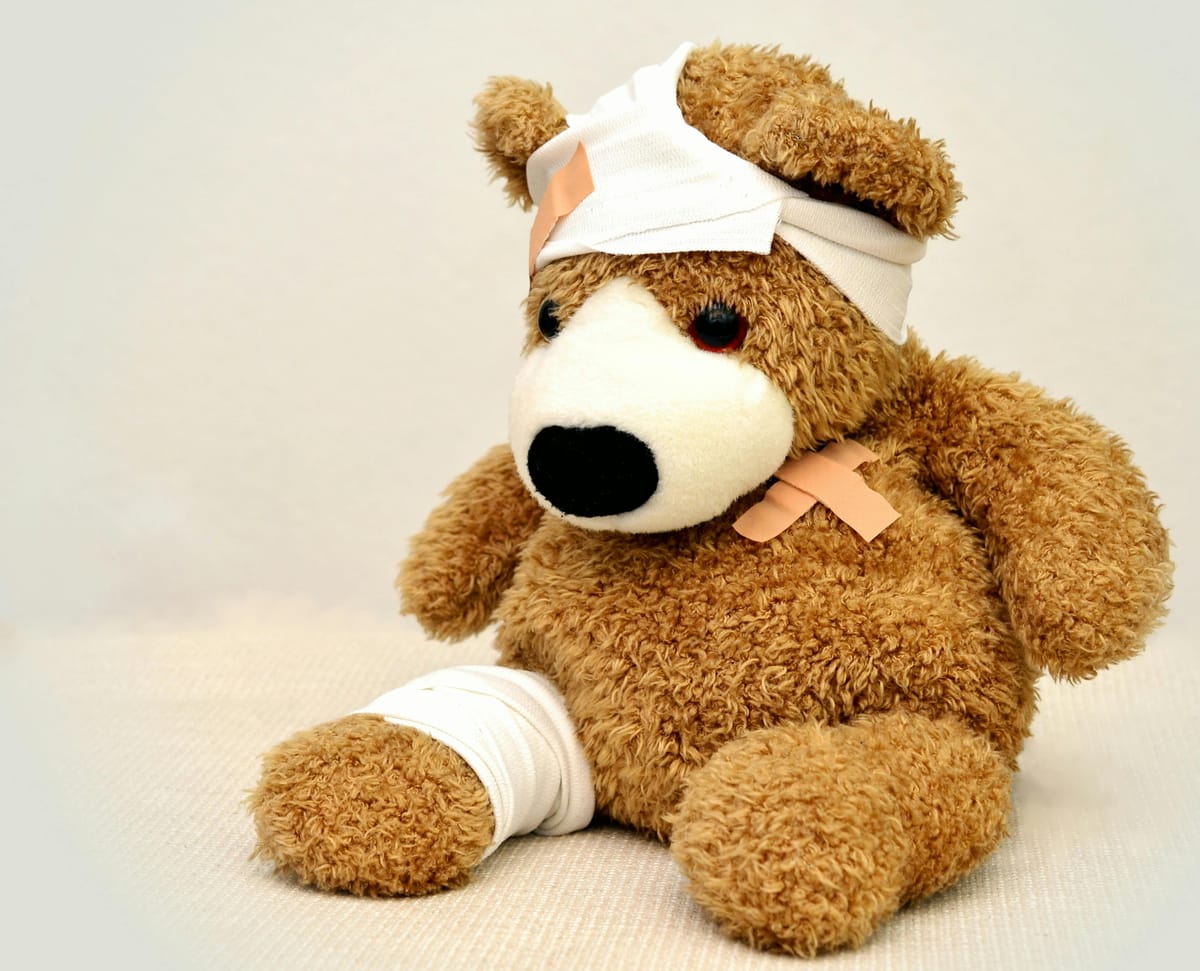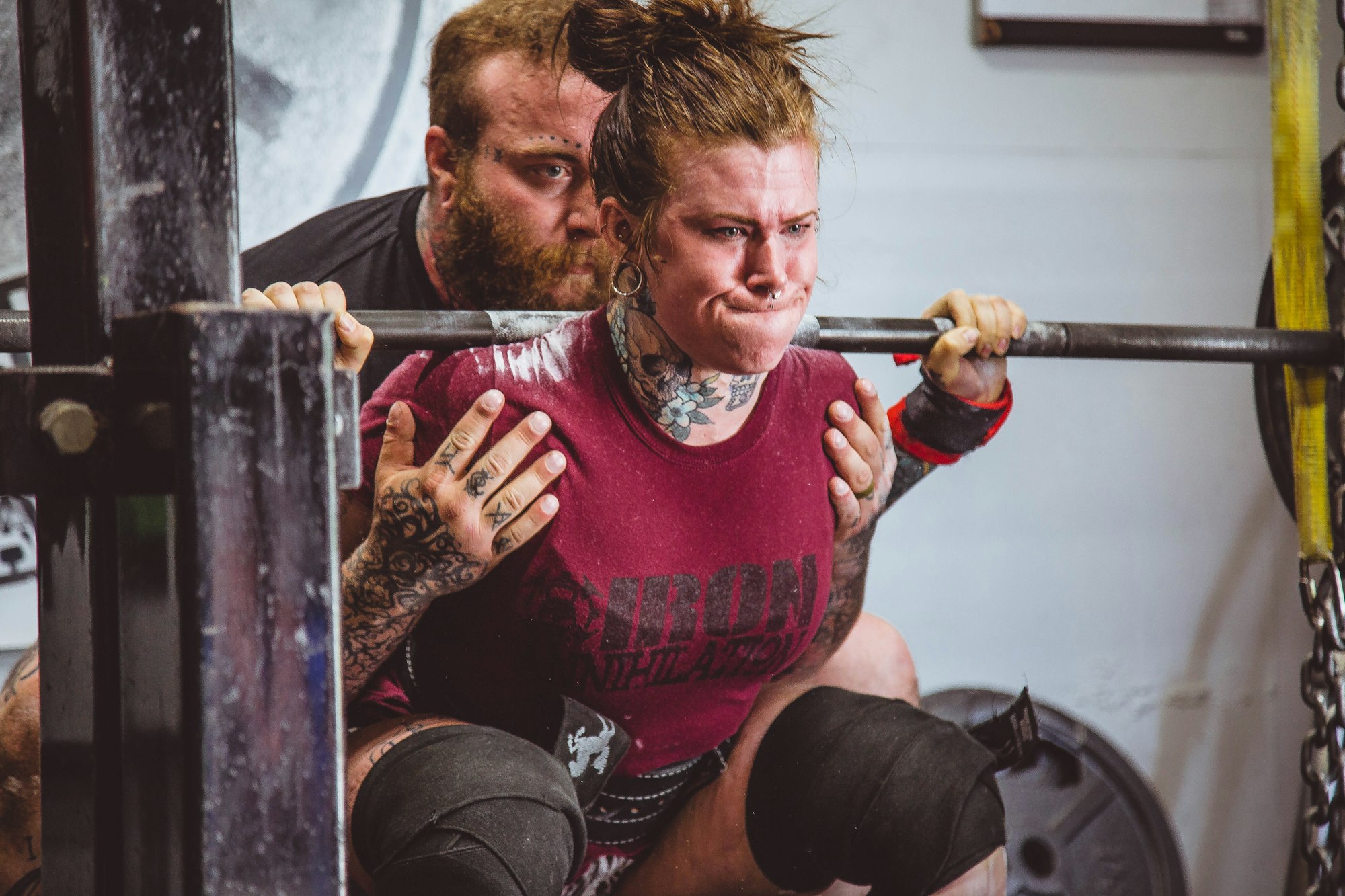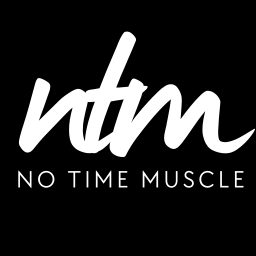Should you still go to the gym if you're injured?


The reality of injury in fitness 🤷♂️
Here's a truth for you: You’re going to get injured in your life.
Whether you're playing contact sports, exercising recreationally, or not exercising at all, pulls, strains, tears, breaks… these are all parts of life.
My philosophy? Don't mollycoddle your body.
You'll often hear people give the advice that you should be “gentle” or “careful” with your body. They're often trying to convince you that looking slightly down all day will ruin your neck, or that you need to roll around on tennis balls to solve your aches and pains.
To be blunt, I fucking disagree.
The benefits of resistance training 💪

We grow and strengthen ourselves through challenge. By pushing our limits. This applies to our physiology as well.
Resistance training with heavy loads forces many adaptations. You may already know that it triggers muscle protein synthesis (MPS) via mechanical tension in the muscle fibres.
It triggers neural adaptations that make us more efficient and competent at recruiting particular motor units, and moving through space in a more efficient and co-ordinated fashion, increasing our ability to express strength.

What you may not know is that there are at least two other adaptations resistance training forces that occur in:
- The ligaments and tendons
- In the bones
First, lifting weights increases tendon stiffness, making pulls and tweaks of these structures almost impossible (unless you do something really dumb).
Second, resistance training increases bone density, essentially making them harder to break or snap.
I think people should be striving (in a way that's integrated into their busy routine that they can implement and forget about) to make their bodies bulletproof. Not cringing and wringing their hands at how fragile their bones, muscles, and tendons are.
A philosophy of anti-fragility

This is a philosophy of anti-fragility.
Just as you want to rear your children to be resilient enough to strike out on their own and thrive when they come of age, I believe you should take the same approach to your body.
What about the elderly? 👵
Here's something of a hot take for you: I believe this applies even to the elderly.
In fact, resistance training and an anti-fragile philosophy might benefit the elderly more than any other demographic.
Leg strength and foot speed play a huge role in preventing falls. If Grandpa is sprightly enough to catch himself if he stumbles on a step, he won't fall. If he doesn't fall, he won't get injured.
But what about when falls do happen? Well, here's where that increased bone density comes in. Greater bone density might prevent, or lessen the severity of, breaks or fractures upon impact. This, too, means less injury.
Plus, resistance training gives elderly people goals, and a sense of progression in their life. This is great for both the physical and mental wellbeing of elderly people.
Understanding injury risk 🦴

You may have heard stories of strongman competitors or powerlifters, and even bodybuilders, tearing muscles, or even ripping tendons off the bone while lifting weights.
Ouch. 🤯
I want to be very clear: This only happens in steroid users.
Injuries in natural athletes are relatively minor, and come in the form of minor strains and tweaks that last a week to a couple of months at the most. You can (and should) train around these injuries, continuing to push your body without aggravating the injured area while it heals.
Why do these catastrophic injuries only happen in steroid users?
Anabolic steroids potentiate the nervous system while forcing increases in muscle size and strength at rates that far outpace the tendons’ ability to keep up.
Steroids do not work on the tendons in the same way. So they will always be the weak link in the chain. For most natural athletes, the muscles will always be the weak link in the chain. You will never be strong enough to use enough weight to really hurt yourself.
That said, there are certain times in even a natural trainee’s lifting career where injury can become more likely:
- When you're a complete beginner
- When you make a change to your workout programming
1) When you're a complete beginner
This is probably THE biggest minefield for injury.
Coordination is poor. And EVERYTHING is weak. Tendons, muscles, everything.
Beginners are also often embarrassed at the weights they have to use to perform exercises properly. So they use more weight than their bodies can handle.
However, the beginner phase is the FASTEST you will ever see strength and muscle gains in your lifting career. If there's a time where muscle strength gains will outpace tendon strength gains in a natural lifter, it's here.
For this reason, amongst others, beginners can benefit from training slightly further from failure, performing higher rep sets with moderate (rather than very heavy) loads, and performing more workout volume overall.
Finally, bear in mind that, as a beginner, you're going from essentially zero resistance training volume to 100%. The difference from what you were doing before, to what you're doing now, is massive. Never again will your body experience a shock like this.
2) When you change your workout programming

Second is whenever you change your workout split, exercise selection, volume, or anything else to do with your workout programming.
Introducing just two sets of a new exercise can add fatigue to weak-link areas that may spill over into other exercises and cause difficulties with recovery.
While your body will adapt, those adaptations may not complete before you tweak or pull your lower back, your quad, or something else.
For this reason, it's best to be wary when introducing changes. Take your time warming up, and don't be afraid to aggressively cut back on volume or intensity for a month or so while your body acclimatises if your body starts biting back.
What to do if you get injured
When you do get injured (because you will) remember that people get injuries even if they don't train at all.
Most importantly: Don't stop training.
Training helps make your body more resilient to these events. So absolutely do not throw the baby out with the bath water, and think you should stop training because you tweaked a muscle.
Completely ceasing training is almost never necessary, and training (even if you can only do so with light loads) should help the healing process, rather than hinder it.
So keep training the area if you can, since flooding the muscle with blood, warming it up, and taking it through its natural range of motion under load will all speed up the recovery process.
Let the area heal until you're able to exercise it with light load, then train it as normal, recovering strength until you're able to bring that movement back to all-time strength levels.
It won't be comfortable, but it most often does help. When you first start moving an area that is stiff and inflamed, it doesn't feel great. But as you get more blood into the area, and move it around, it'll soon limber up.
Conclusion: Train for resilience

In short, don't treat your body like a pile of leaves the slightest breeze could harm. And don't be afraid of catastrophic injury. One rep max attempts (especially if performed infrequently) are perhaps the only mid-risk event you'll experience as a natural trainee.
That said, big changes in programming (especially as a beginner) bring a temporary increase in injury risk for a month or so as your body adapts. Be wary during these times.
This is how to bulletproof your body: Become brutally strong in every possible position and movement pattern you can. Your body can (and will) keep up, but you must force it to do so by training hard and pushing yourself.
Want to be able to lose weight and not worry about what you eat?
If you want to lose weight, but all your efforts seem impossible, it’s because you’re missing the secret cheat code that flips the dieting equation on its head.
Most people try to either eat less, or move more.
But it’s so easy to eat just a little too much.
And cardio is both time-consuming and boring.
But there’s a way to increase your energy expenditure passively, while you go about your day. The best part? It’ll shape and sculpt your body (including any body fat you are carrying) from underneath, rapidly transforming your body shape.
All you have to do?
Build 10-20lbs of muscle mass. 👇

